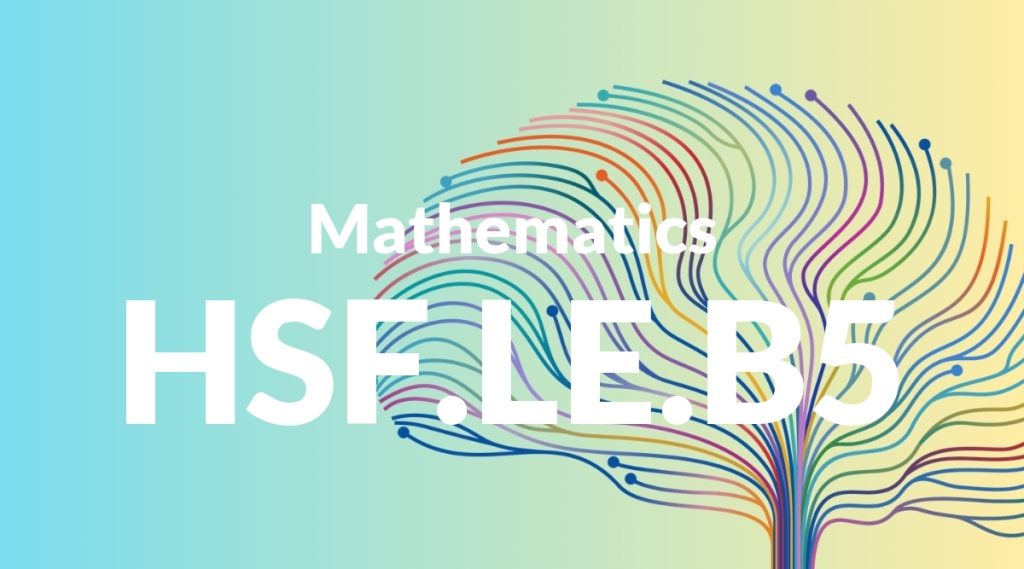Standard: HSF.LE.B5 – Interpret the parameters in a linear or exponential function in terms of a context.
Grade level: High School: Functions
Subject: Mathematics
Domain: Linear, Quadratic, & Exponential Models
Teacher Overview
This standard focuses on interpreting the parameters in linear and exponential functions within a given context. Understanding these parameters is crucial for applying mathematical models to real-world situations, which is a key skill in advanced mathematics and various fields. Students need a solid grasp of basic algebra and familiarity with linear and exponential functions. They should understand how to solve equations and interpret graphs.
After mastering this standard, students will be able to apply their understanding of function parameters to more complex scenarios, enhancing their problem-solving skills and preparing them for advanced studies in mathematics and related fields.
Common Misconception 1
A common misconception is that students might confuse the parameters in linear and exponential functions. For example, they may not distinguish between the slope of a linear function and the growth rate of an exponential function.
Intervention 1
To address this, use clear visual aids and contextual examples that highlight the differences in how parameters function in linear versus exponential models.
Common Misconception 2
Another misconception is that students may believe that the parameters are abstract and do not have real-world significance. They might struggle to connect mathematical parameters to practical applications.
Intervention 2
To remediate this, present problems that require students to interpret parameters in real-world contexts, such as population growth or financial models.
Prerequisite Knowledge
Students should have a strong understanding of basic algebra, including solving equations and understanding variables. They should also be familiar with the concepts of linear and exponential functions, including their graphs and basic properties.
Subsequent Knowledge
Students will develop the ability to apply linear and exponential models to more complex real-world situations. They will also gain skills in interpreting and comparing different types of functions and understanding their practical implications.
Instructional Activities
- Create a project where students model a real-world scenario using linear and exponential functions.
- Have students compare and contrast the parameters of linear and exponential functions using graphing software.
- Conduct a classroom discussion on the importance of function parameters in various fields such as economics and biology.
- Use interactive simulations to demonstrate how changing parameters affect function behavior.




